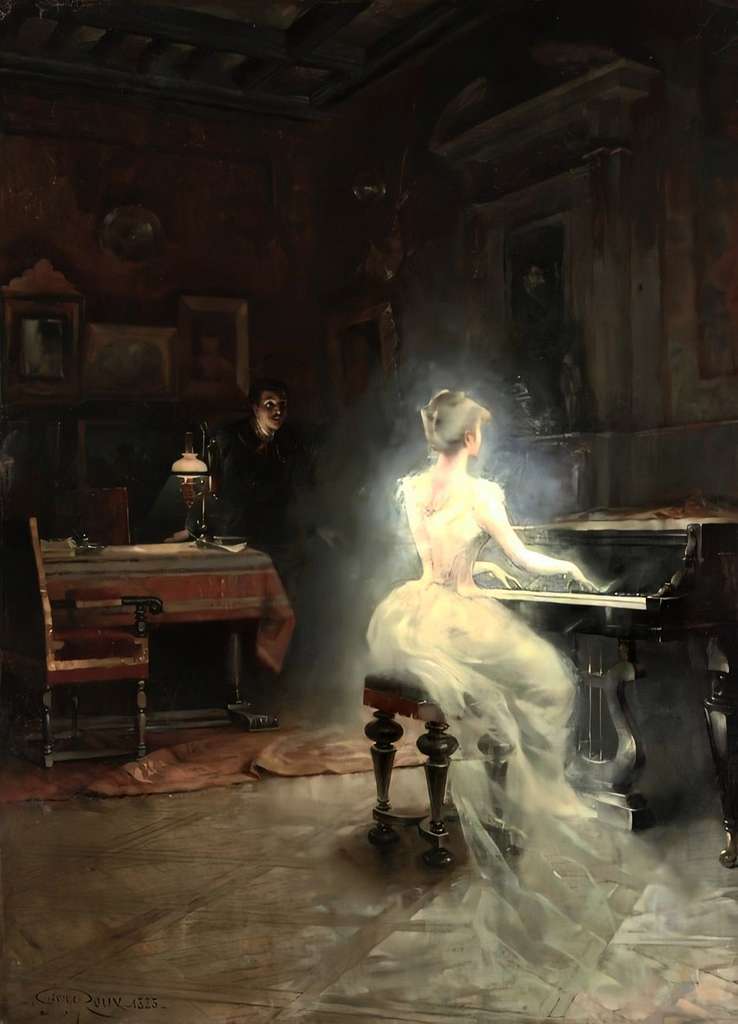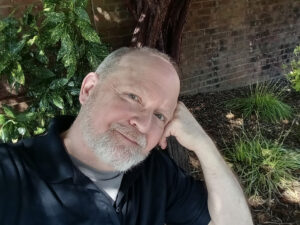My daughter Jess died in 2015. I don’t expect to see her again, not in this life. I know she’s dead. And yet I join millions of fellow bereaved parents in sensing my child’s presence. Many mourners tell me that they feel a similar connection with their lost loved ones. They are often relieved to learn that such experiences are more common than we might think.
In 1995 the University of Nottingham conducted an extensive survey in conjunction with the University of York’s Institute for Research in the Social Sciences. Clinicians interviewed 1,603 bereaved persons about sensing the presence of their dead. The results were surprising: 98.6 percent reported experiencing their loved ones at home, while driving, in a dream or when ill; 1.4 percent—only 23 individuals—were uncertain if the sensations they experienced were real at that moment or merely memories.
“Why hasn’t the media picked up on this?” asked journalist Philip Yancey when I shared these results with him. The answer is simple, writes Mary-Francis O’Connor with the University of Arizona: “Grief researchers have not been very successful at broadcasting what they have learned.” Perhaps it’s time for a hard look at what experts have discovered.
Visionary experiences such as those evaluated in the Nottingham study are “hyperreal,” according to Simon Peng-Keller with the University of Zurich. Unlike dreams, he relates, they have an intense grounding in reality and a high level of clarity. The visions are not fleeting; rather, they are powerfully imprinted in our memory. Grief experts refer to them as external dialogues. They consist of literal interactions with the deceased, whether as a sense of presence, or as a visual or auditory expression.
Yet this ordinary experience is rarely discussed.
A vast majority of the bereaved speak nearly in a whisper of these subtle but meaningful exchanges, as though fearful that they will be perceived as irrational or deluded. “It may seem the stuff of a suspense novel,” observes respected grief counselor Ashley Davis Bush, “but the stories are so consistent and so typical that they cannot be easily dismissed.” Nor, perhaps, should they be.
The American Psychiatric Association considers these phenomena, when the bereaved “hears the voice of, or transiently sees the image of, the deceased person” as “characteristic of a ‘normal’ grief reaction.” Such experiences do not indicate mental disorder. “While we would not want a person to experience hallucinations,” writes bereavement therapy pioneer Lorraine Hedtke with California State University San Bernardino, “all these responses could lie well within emerging views of normalcy.” Thousands of others relate similar stories. Christine Valentine with the University of Bath reports that in the Centre for Death and Society’s work with mourners there have been numerous occasions when interviewers and interviewees sensed an active presence of the deceased in the room.
Roberta Dew Conant, a clinical psychologist with Outpatient Mental Health at Boston Regional Medical Center, interviewed widows who had lost their husbands to sudden, unexpected deaths. “Most of the widows also reported dramatic times that had convinced them of the husband’s presence as a spirit,” Conant writes. “These were highly emotional experiences that were felt to be consoling.” The widows related that they were amazed at the vividness of their experiences. They spoke of seeing, hearing, or being touched by their husbands. “The comparison to hallucinations was voiced spontaneously five times and was always denied,” Conant adds. “These were not hallucinations.”
One finding of Conant’s study was that the events were “an experience of externality or realness” that was simultaneously acceptable and private for the widows. They expressed feelings of comfort. Their husbands seemed to recognize and commiserate with their sorrow in a way that allowed their attachment to continue to grow in absence. “The intense pain of grief was an acknowledgement of the present reality, not an end to caring,” Conant concludes. “The widow was often left with emotional peace, a conviction of ongoing spiritual life for the deceased and of resolution of her internal conflict over the death.”
Widows, widowers, bereaved parents, siblings, orphans, close friends—these experiences are not limited to a single category of mourners. Susan Datson, director of Spiritual Care with Cornerstone Hospice, and psychologist Samuel Marwit, interviewed twenty male and sixty-seven female mourners “related to the personal sensing experience.” They found that such factors as the quality of support, beliefs, or specific demographics do not play a significant role in the perceived presence of their dead. The only common thread seems to be the surprising clarity and sense of nearness of their loved ones. “In 1988, when my husband of twenty years died in a hiking accident,” writes historian Elaine Pagels with Princeton University, “I became aware that, like many people who grieve, I was living in the presence of an invisible being—living, that is, with a vivid sense of someone who had died.”
Reports of similar sensations were commonplace among Christians in the early first century. Then as now, such experiences are not easily disregarded as pastoral hyperbole. Something more seems to be going on. “I feel very strongly (and I am not alone in this), that some great good comes from the dead to the living in the months or weeks after the death,” writes C. S. Lewis. “I think I was much helped by my own father after his death . . . Certainly, they often seem just at that time, to be very near us.” Others share Lewis’s belief.
Author and Bible translator J. B. Phillips swears he interacted with Lewis shortly after he died. Frederick Buechner relates a dream and tangible expression of a friend who had passed a few months earlier. After his daughter died in his arms, Martin Luther knew and approved of one story about a mother’s spiritual encounter with her dead son. Norman Vincent Peale frequently told the story of seeing his father walk down the aisle at his own funeral. “Is it not at least conceivable, therefore, that around us now in this mysterious universe are those we have loved and lost for a while,” Peale writes, “but that between us is a barrier through which we can see only in rare moments when for some reason the frequency in them corresponds with some higher frequency in ourselves? I think so.”
Mourners cannot sustain a certainty that there is no afterlife, discovered Ronald Knapp with Clemson University. He interviewed 300 bereaved couples over the course of ten years; a surprising 298 couples (99.3 percent) reported sensing their children with them at one time or another, usually more than once and often for years. Another ten-year analysis, reported in the professional journal Death Studies, found that almost all bereaved parents feel that they experience their children now and will see them in heaven. This is true even with those who do not believe such a place exists.
The spiritually inclined relate that they feel the soul of their loved one was immediately accepted by God after leaving the body. Cold comfort, perhaps, but in grief the thought that our loved ones continue on, whole and happy, provides a deep and meaningful solace. “The dead are here with us, in the air that we are moving through all the time,” writes poet and priest John O’Donohue. “With the refinement of your soul you can sense them. You feel that they are near.”
Researchers have concluded that belief in a soul provides the bereaved with hope that they may somehow feel the deceased. This sense of presence frequently occurs within the first few weeks of a death. “Sometimes it seems to me that a special deep communication can exist between us and those we loved so much and left us,” writes Henri Nouwen. “I think that anyone who we love sends us his or her spirit when they die. I am convinced that in a very deep sense [they] remain with us, not just in our memory but also in our life with each other.”
Later, as months or years pass, the bereaved report that their dead remain with them. They also tell of signs from their lost loved ones: a fallen leaf, a bird, a knick-knack, a random word, an unexpected wind or scent. Isabel Allende says poignantly that her daughter Paula, who died in 1992, “is a gentle presence that is with her always, like a second skin.”
Hearing, seeing, or sensing a presence is almost never associated with a belief that the dead have come back to life in any physical way, writes Christopher C. H. Cook with Durham University. Rather, our dead seem to be a source of support and comfort. These experiences often contribute to a religious belief that fosters healthy grieving as the bereaved adapt to life without their loved one.
Therapists call our ongoing connection with the deceased continuing bonds. These bonds facilitate acknowledgement of death while providing comfort that our loved one’s influence lives on. As such, the question of whether we actually see our dead in a mystical vision or as part of a “personal mythology” is beside the point. Our experiences have meaning in the context of a relationship that remains important to us.
Continuing bonds with our dead are part of contemporary spirituality and recognized as helpful by grief experts. Yet some believers, particularly in Western Christianity, fear that such a connection is in conflict with their allegiance to God. This may be one reason that church-goers seldom feel comfortable discussing experiences of their dead loved ones. They report hiding their grief and any anecdotes of messages or signs. Some congregations have discouraged these stories as being “demonic,” citing the Levitical prohibition against spirit mediums. The dead are with God and therefore, it is suggested, cannot interact with the living.
Such negative religious coping, as therapists call it, is fostered externally by a lack of support in some faith communities and pressure to celebrate the death as a union with God. Mourners relate that their lived reality of sorrow is in conflict with these expectations, causing prolonged acute grief and a form of heightened reactivity. They find it even harder to adjust.
It occurs to me that perhaps we have created an impossible either/or choice where none needs to exist. “Since both the departed saints and we ourselves are in Christ,” notes respected Bible scholar and Anglican bishop N. T. Wright, “we share with them in the ‘communion of saints.’ I see no reason why we should not pray for and with the dead and every reason why we should . . . Love passes into prayer; we still love them; why not hold them, in that love, before God?”
We will always feel the absence of those we have lost, loving in separation, as philosopher Thomas Attig puts it. I often tell fellow mourners that we have a new relationship with our dead. They are with us still, their presence deeply felt. It’s comforting to sense that my daughter will continue to inhabit and inform my life until that hoped-for day of reunion—the moment I hold her in my arms again.
Image Credit: George Roux, “Spirit” (1885) via Collections – GetArchive





1 comment
Mel Livatino
I am deeply grateful for this piece by David Bannon. Though not at all the same thing as I wrote about in an essay years after the death of my wife called “Collecting Faces,” it made me remember that piece enough that I shall submit it to this journal. Thank you, Mr. Bannon, for this wonderful piece.
Comments are closed.